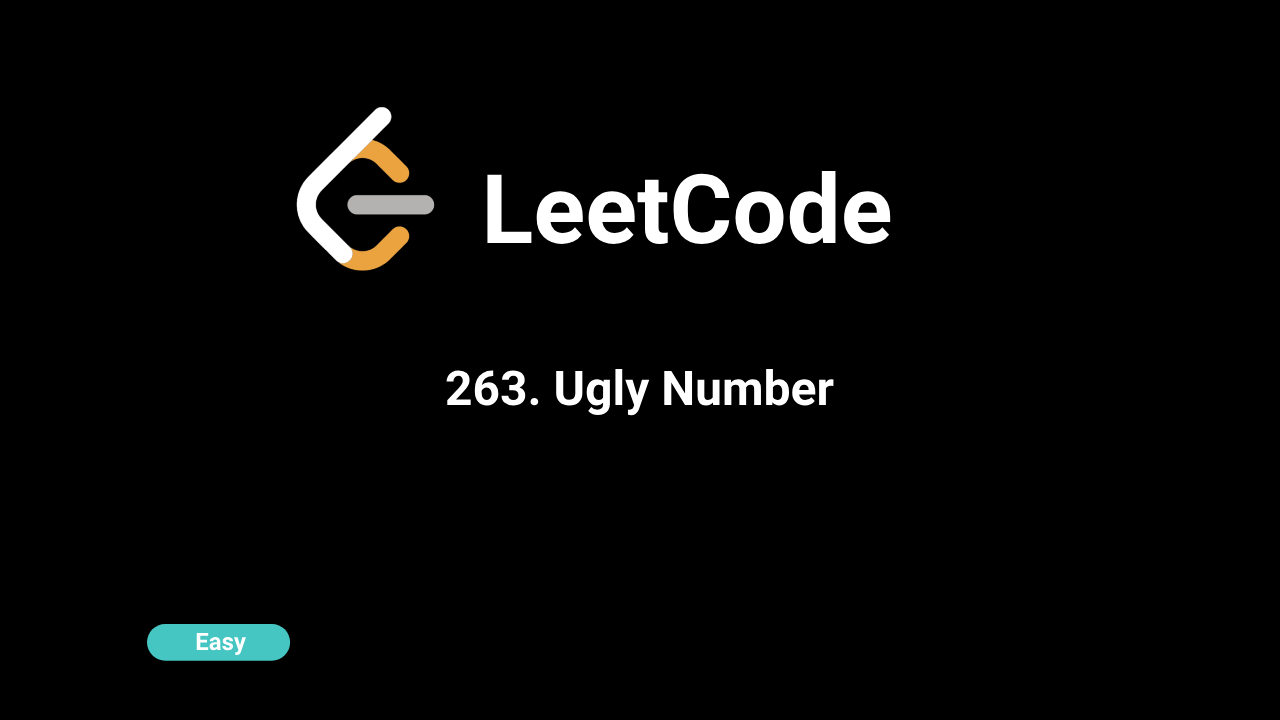🎨Now live: Try our Free AI Image Generation Feature

Description
An "ugly" number is a positive integer whose prime factors are limited to 2, 3, and 5. The task is to determine whether a given number n is an ugly number.
Intuition
The idea is to reduce the number n by dividing it by 2, 3, and 5 repeatedly. If the number can be completely reduced to 1 by dividing only by these prime factors, then it is an ugly number. If any other prime factor is found (i.e., the number cannot be reduced to 1), then it is not an ugly number.
Approach
- Initial Check:
- If
nis less than or equal to0, it cannot be an ugly number, so returnfalse. - Division by Prime Factors:
- Repeatedly divide
nby2,3, and5as long as it is divisible by these numbers. - Final Check:
- After the division process, if the remaining value of
nis1, returntruebecause it is an ugly number. - If the remaining value is not1, returnfalsebecause it meansnhad prime factors other than2,3, or5.
Complexity
Time Complexity:
O(log n) where n is the given number. This is because the number is repeatedly divided by 2, 3, or 5, which effectively reduces the number's size in each iteration.
Space Complexity:
O(1) as we are only using a constant amount of space for the operations.
Code
C++
class Solution {
public:
bool isUgly(int n) {
if (n <= 0) return false;
while (n % 2 == 0) n /= 2;
while (n % 3 == 0) n /= 3;
while (n % 5 == 0) n /= 5;
return n == 1;
}
};Python
class Solution:
def isUgly(self, n: int) -> bool:
if n <= 0:
return False
while n % 2 == 0:
n //= 2
while n % 3 == 0:
n //= 3
while n % 5 == 0:
n //= 5
return n == 1Java
class Solution {
public boolean isUgly(int n) {
if (n <= 0) return false;
while (n % 2 == 0) n /= 2;
while (n % 3 == 0) n /= 3;
while (n % 5 == 0) n /= 5;
return n == 1;
}
}JavaScript
/**
* @param {number} n
* @return {boolean}
*/
var isUgly = function (n) {
if (n <= 0) return false;
while (n % 2 === 0) n /= 2;
while (n % 3 === 0) n /= 3;
while (n % 5 === 0) n /= 5;
return n === 1;
};